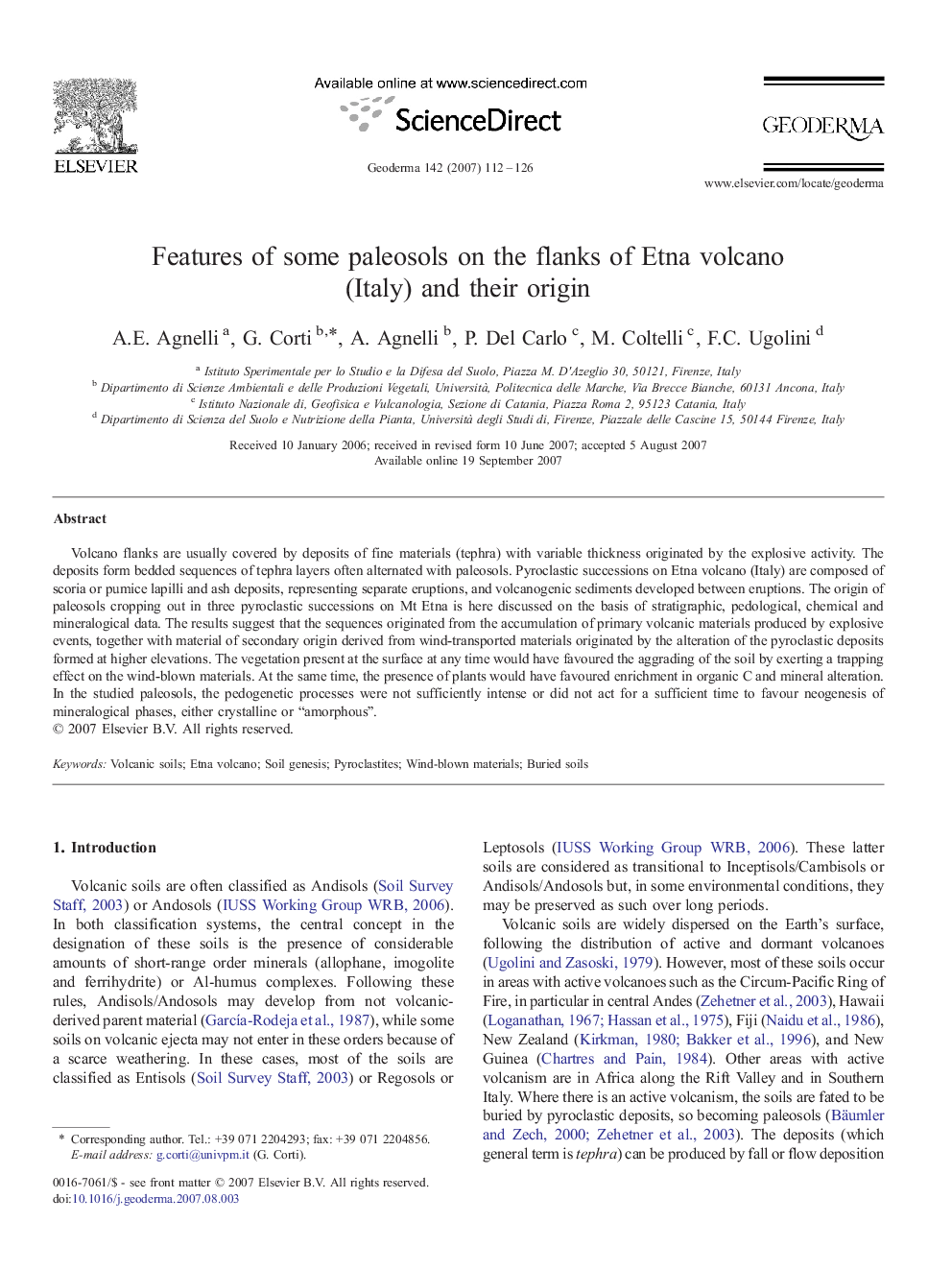| Article ID | Journal | Published Year | Pages | File Type |
|---|---|---|---|---|
| 4575302 | Geoderma | 2007 | 15 Pages |
Volcano flanks are usually covered by deposits of fine materials (tephra) with variable thickness originated by the explosive activity. The deposits form bedded sequences of tephra layers often alternated with paleosols. Pyroclastic successions on Etna volcano (Italy) are composed of scoria or pumice lapilli and ash deposits, representing separate eruptions, and volcanogenic sediments developed between eruptions. The origin of paleosols cropping out in three pyroclastic successions on Mt Etna is here discussed on the basis of stratigraphic, pedological, chemical and mineralogical data. The results suggest that the sequences originated from the accumulation of primary volcanic materials produced by explosive events, together with material of secondary origin derived from wind-transported materials originated by the alteration of the pyroclastic deposits formed at higher elevations. The vegetation present at the surface at any time would have favoured the aggrading of the soil by exerting a trapping effect on the wind-blown materials. At the same time, the presence of plants would have favoured enrichment in organic C and mineral alteration. In the studied paleosols, the pedogenetic processes were not sufficiently intense or did not act for a sufficient time to favour neogenesis of mineralogical phases, either crystalline or “amorphous”.
